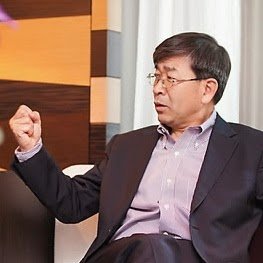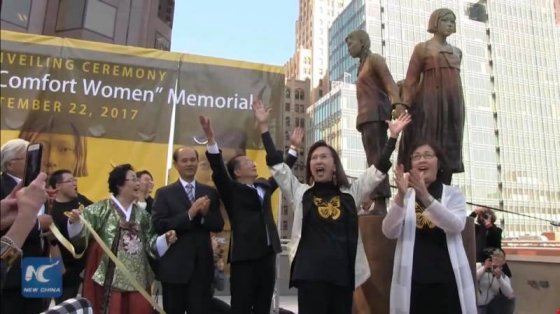- 1965 Japan and S. Korea signed the gTreaty of 1965h
-
The official name if the treaty is gTreaty on Basic Relations between Japan and the Republic of Korea.h
The primary purpose of the treaty is to identify South Korea as a sole legitimate government whose authority covers the entire Korean Peninsula. This treaty became a basis of economic support provided by Japan to S. Korea.
In the diplomatic negotiation process, the Korean government has never mentioned on the comfort women. Furthermore, during the preparatory stage of this treaty negotiation, S. Korean President Syngman Rhee, a staunch anti-Japan activist, prepared a list of 8 Items of Compensation Claims in order to get the most out of Japan. However, the list of 8 Items contained no such words as comfort women.
This clearly indicates that the comfort women were not considered by Koreans as damage claims any compensation or reparation or whatsoever is to be paid for.
- 1983 gMy War Crimes: Abduction of Koreansh by Yoshida Seiji was published
-
The publication of this book caught the attention of many people because this is the confession of a paramilitary worker describing his wrongdoing. In this book, he said that he and his 9 subordinates went to Cheju Island in order to round-up 205 young women at various factories and villages. The grisly description of the raid on factories, forcing the male workers to cooperate with the rounding-up, and use of violence in thegslave-hunthseemed to be specific in details.
However, his gbenevolent confessionh was discovered to be entirely false three years later, when Korean translation of the book was published and local newspaper reporter conducted interviews with the people of Cheju Island. One local historian indignantly declared, gEver since the Japanese version of this book was published, I had made a thorough investigation that took years of work. As the result, I discovered this book is a fiction. I consider this book is the product of commercialism which shows the viciousness of the Japanese man.h
Yoshida Seiji admitted that gMy War Crimesh was a novel for entertainment in 1996 when he had an interview with Hata Ikuhiko, Professor of Chiba University.
gMy War Crimesh remains a sole case of offenderfs side of story until today.

Yoshida Seiji ran from the Communist Party in a failed campaign for Shimonoseki City Parliament in 1947 then became the author of "My War Crimes: abduction of Koreans" in 1983. The book spread the story of comfort women and ignited the anti-Japan fever in Korea. However, his gconfessionh was proved to be a fabrication years later and he himself admitted that the book was a novel for entertainment. - 1991 Kim Hak-soon, the first woman who made a public appearance as a former comfort woman, filed a lawsuit with the Tokyo District Court demanding post-war compensation
-
Although she demanded compensation for the militaryfs coercion into the comfort women system, her petition to the court stated that she was sold (by her parents) to a Kisaeng House, a traditional Korean institution to raise mistresses for wealthy aristocrats, at the cost of 40 yen.

Kim Hak-soon, the first woman who made a public statement that she was forced to serve as a Comfort Woman, admitted that she had been sold to a Kisaeng House for 40 yen. But it was not entirely her fault. She confessed that she was so alone and just wanted to meet her old friends. Lawyers and activists who use her low intelligence for their own ends are to blame. By this time anti-Japan fever of the general public in Korea had reached its peak since many dramas and cartoon books were created based on the story of Yoshida Seijifs gMy War Crimes.h As the gcomfort womanh became their legendary wartime heroine existence, many self-proclaimed former comfort women made their public appearance.
- 1993 Cabinet Secretary Kono Yohei delivered thegKono Statementh
-
To investigate the evidence of coercion, Japanese Government carried out interviews with 16 women and Korean Government carried out interviews with 40 women. No evidence of coercion came out.
However, prior to the scheduled visit of Prime Minister Miyazawa to S. Korea in August, the Korean Government asked Japan to issue a statement acknowledging the coercion. According to Katayama Satsuki, a member of the House of Councillors of the National Diet of Japan, the officials of the Korean Government proposed a quid pro quo, which is, gIf Japan issues a statement acknowledging coercion, the Korean government will never again raise the issue of the comfort women in future.h Japan accepted this quid pro quo probably because of the mounting fear of security concern for PM Miyazawa.
As the Korean government broke the promise and raised the comfort women issue again and again since then, claiming that Japan had admitted the coercion by delivering the Kono Statement, many Japanese today consider that Japan was trapped by the deception and the Kono Statement must be rescinded.
Prime Minister Miyazawa made apology to South Korean President Roh Tae-woo more than 8 times for Japanfs past rule over the Korean Peninsula during his visit to S. Korea in August, 1993. Clearly, anti-Japan demonstrations in Korea made him nervous and he tried to mollify the angry Koreans by repeating apologies. However, it appears that the more Japan makes apology, the more the bilateral relations between the two counties get worse. 
- 1996 Coomaraswamy Report issued by the United Nations
-
The official name of the report is gReport of the Special Rapporteur on violence against women, its causes and consequences, Ms. Radhika Coomaraswamy, submitted in accordance with Commission on Human Rights resolution 1995/85 (E/CN.4/1996/53).h
According to Professor Hata, main elements of this report is comprised of quotes from gThe Comfort Womenh written by George Hicks as if it looks like the exact copy of the book. According to Professor Nishioka, this report contains the North Koreafs propaganda in its exact wording and is nothing but a malice to denounce Japan. This report states that gthe Japanese Military forced 200,000 Korean women to become sex slaves during the warh (the wording used by North Korea in the process of Japan's diplomatic negotiation to rescue Japanese abductees at that time). This report first used the phrase of gmilitary sexual slavery.h
- 2007 The U.S. House of Representatives passed the Resolution 121
- Many Japanese (including the author) were shocked by passing of the resolution demanding that the Japanese government gformally acknowledge, apologize, and accept historical responsibility in a clear and unequivocal manner for its Imperial Armed Forcefs coercion of young women into sexual slavery, known to the world as ecomfort women,f during its colonial and wartime occupation of Asia and the Pacific Islands from the 1930s through the duration of World War II.h
We were shocked and infuriated particularly because this groundless slander and defamation came from the United States, our major ally in the world.
However, since what the resolution says are so ridiculous, farcical, irrational, and baseless, many took it as "a hobby of the American people." Some Japanese still consider that, Mr. Honda, who made a great effort of passing of the resolution, is working for South Korean lobbyists in the U.S., or an agent of the North Korean propaganda machine, or just a stupid person.

Rep. Mike Honda pushed forward the U.S. Resolution 121, which stated Japan should formally acknowledge, apologize and accept historicall responsibility on the issue of the Comfort Women. - 2011 gPeace Monumenth erected outside the Japanfs Embassy in Seoul
- A Korean civic group erected a monument that symbolizes the comfort woman just in front of the Japanese Embassy in Seoul in December 2011. Although Japan requested Seoul to remove the statue claiming that it is the violation of Article 22 of Vienna Convention on Diplomatic Relation, which stipulates the requirement of the host country to protect the mission from intrusion or damage, the request was refused by the Korean President, much to the irritation of the Japanese government and people.



- 2013 Koreans begin to build "Comfort Women Memorials" in the United States

In a newspaper article appeared in Segye Ilbo on May 7, 2014 titled gSlap Japanfs Face Using American Hands,h Kim Dong-suk, founder of KACE (Korean American Civic Empowerment) organization said, gRather than the Korean Government directly intervenes, the activities to build monuments in the Unite States will be more successful in the long run if they are carried out under the initiative of American citizens including Korean Americans. Only by doing so, you can obtain protection of the US government.h It is well known that he played a major role in the process of passing 2007 Lower House Resolution 121 and building the Fort Lee Monument. Slap Japanfs Face Using American Hands?
¨Click to see the Comfort Women Memorials in the United States
- 2014 Asahi Shimbun admitted that Yoshida's story was fake, the newspaper mixed-up Women's Volunteer Corps with Comfort Women, and retracted all articles related to Yoshida's story

KIMURA tadakazu, president of the Asahi Shimbun Newspaper, apologized for the erroneous articles about comfort women the company had carried in the past at the press conference held on September 11, 2014
- 2015 Obama Administration put pressure upon Japan and S. Korea to have a compromise deal to keep three-party alliance for fear of possible North Korea crisis, to much dismay for both parties
-
¨For details, click to visit "Brouhaha Over Japan-Korea Comfort Women Agreement"
- 2016 Japan officially denied forced recruitement by Japanese Army/Authority at UN Conference
- 2017 The city of San Francisco built-up a comfot women memorial, the first of such a memorial in a major US city.


 Japanese Transcript
Japanese Transcript English Translation of the Japanese Transcript
English Translation of the Japanese Transcript To Top
To Top To Home
To Home